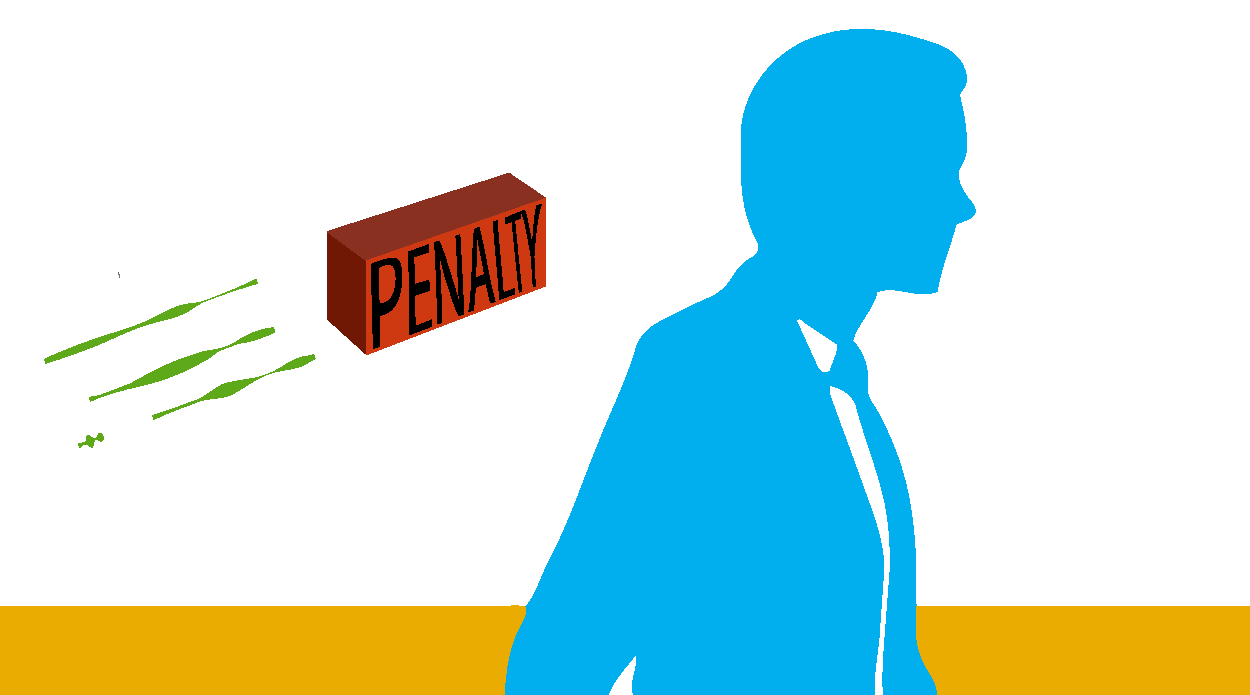Choosing the Right Business Structure
Choosing the Right Business Structure
Having the Right Business Structure can save your business time, stress and money. But what is the Right Business Structure for your business? The ATO has some good information on this, but here are a few more things to think about.
5 commonly used business structures in Australia are:
- Sole traders
- Partnerships
- Companies
- Unit trusts
- Family trusts
But to get the Right Business Structure it is important you understand these advantages and responsibilities as they may affect:
- The way tax applies to your business
- Protection of your assets
- Your operating costs
- How other businesses deal with you.
Sole traders
If you want to keep it simple trading as a sole trader may be the Right Business Structure for your business. If you operate your business as a sole trader, although you may decide to have employees, you trade, control and manage all aspects of your business. A sole trader is simple a person that does business, not a separate legal entity like for example a company.
Advantages
- There are very few legal and tax formalities involved in setting up the business.
- The structure is inexpensive to set up.
- You have full control of the business.
- You receive the full benefit of profits made by the business.
- You keep all the after-tax gains if the business is sold.
Things to consider
- Your access to finances is usually limited to your own resources.
- If you have no employees, you usually have to do all the work.
- You are fully liable for your business debts, so you risk losing personal assets (home, vehicles, etc.) if you cannot repay your debts. Similarly, any intellectual property may be at risk if the business fails.
- You may be limited in how long you can stay away from the business (i.e. less holidays). Similarly, if you become sick or have an accident your business may stop operating.
- You pay tax on profits at your marginal tax rate, which may be higher than the company tax rate.
- You need to put money aside to pay tax; otherwise, you may have cashflow problems at tax time.
- Few tax concessions are available.
- The business structure limits opportunities for expansion.
Reporting and paying income tax
As a sole trader, you need to report the business income you earn (after expenses) on your personal income tax return, along with any other income you earn.
You pay the same tax as any other individual and you’re also entitled to the tax-free threshold if you are an Australian resident.
Paying super
You are responsible for your own super arrangements and may be able to claim a deduction for personal super contributions you make. You must also make super contributions for any eligible workers you employ.
Partnerships
A Partnership may be the Right Business Structure for your business. A partnership is when 2 or more people operate a business as co-owners and share income. All coowners (i.e. partners) act on behalf of each other in the business. Like the sole trader structure, a partnership entity is not separate from its operators.
Advantages
- Partnerships are easier and less expensive than companies to set up.
- Partners may carry on business under a trading (business) name.
- Partnerships combine the resources and expertise of a number of people.
- Partnerships are simple to administer. Profits and losses are shared between partners according to his/her share (as specified in the ‘partnership agreement’).
- Unlike the sole trader structure, partnerships allow for greater flexibility in holidays and sick leave.
- Unlike companies, partnerships do not have to disclose their profits to the public (i.e. greater privacy).
- Changing the legal structure is relatively simple (i.e. changing from a partnership into a company at a later stage).
Disadvantages
- All partners together are personally responsible for business debts. Each partner is Individually liable for debts incurred by the other partners. This is known as being ‘jointly and severally’ liable (i.e. unlimited liability).
- All partners have a right to participate in the management of the partnership (unless otherwise agreed).
- Tax is charged at the personal tax rate. As business earnings increase, so does the tax rate.
- Partners cannot transfer their ownership to someone outside the partnership unless the other partner(s) agree.
- Personal differences may interfere with business.
Reporting and paying income tax
Although your business does not pay tax, you need to lodge an annual partnership income tax return on behalf of the business to show the total income earned and deductions claimed by the business. The tax return also shows each partner’s share of net partnership income.
As a partner you need to pay tax on your share of the partnership income (less expenses) you earn. Under a partnership, each partner is personally liable for the tax debts of the partnership.
Paying super
As a member of the partnership, you are responsible for your own super arrangements as you are not an employee of the business. You may be able to claim a deduction for any personal super contributions you make, and the partnership must make super contributions for any eligible workers they employ.
Companies
A company may be the Right Business Structure for your business. If you operate your business as an incorporated company, the business is a distinct legal entity that is regulated by the Australian Securities and Investment Commission.
A company is a more complex business structure. Usually, the set-up and administrative costs for a company are higher than for other business structures.
Our estimated setup fee for a company including ABN application is $1,375 including GST.
Advantages
- Generally, shareholders are not liable for the debts of the business.
- A company has far greater access to capital for the running of the business.
- Legal arrangements are in the company’s name, not in the name of its directors and managers.
- The business structure ensures continuity of management and ownership in the event of the death or disability of key people (because company shares may be transferred).
- The tax rate for companies is less than the highest rate for individuals.
Disadvantages
- A company is more expensive to establish.
- Companies are more regulated than other business structures.
- The rules for establishing and running a company are more complex and costly than other business structures.
- Lessors, suppliers and lenders are reluctant to lend money or enter into contracts or leases with proprietary limited companies unless directors or shareholders provide personal guarantees.
- If directors fail to meet their legal obligations, they may be held personally liable for the company’s debts.
Reporting and paying income tax
Your company must lodge an annual company tax return to report its income and deductions, and the income tax it is liable to pay. All companies pay their own income tax.
Your company pays tax on its net profit at a flat rate of 30%, which may be an advantage for businesses with high profit levels.
If you receive wages or director’s fees from your company, you need to include them in your individual tax return and pay tax on them at the individual tax rates.
Paying super
Your company must make super contributions for any eligible workers it employs, including you as a company director.
Trusts
A trust may be the Right Business Structure for your business. A trust is a relationship where a trustee (an individual or a company) carries on business for the benefit of other people (the beneficiaries). For instance, a trustee may carry on a business for the benefit of a particular family and distribute the yearly profit to them.
A trust is not a separate legal entity. A trust may be discretionary (i.e. the trustee decides how profit will be distributed among beneficiaries) or have fixed interests (i.e. it will benefit certain people in predetermined proportions). The trustee can be a company (a corporate trustee).
Two popular types of trust arrangements used by small businesses or for investment purposes are unit trusts and family trusts.
Our estimated setup fee for a trust including ABN application is $835 including GST.
Unit Trusts
These are trusts where the interests of beneficiaries are denominated by units, which can often be bought and sold in a way similar to trading in shares in a company. Unit trusts are used in many commercial arrangements, including managed investment schemes.
Family Trusts
Many family trusts are discretionary trusts due to the flexibility they offer – income can be allocated to beneficiaries at the trustee’s discretion.
Trusts that qualify as a family trust for the purposes of the trust loss provisions may benefit from concessional tax treatment.
Advantages of a trust
- A trust provides asset protection and limits liability in relation to the business.
- Trusts separate the control of an asset from the owner of the asset and so may be useful for protecting the income or assets of a young person or a family unit.
- Trusts are very flexible for tax purposes. A discretionary trust provides flexibility in the
distribution of income and capital gains among beneficiaries.
- Beneficiaries of a trust are generally not liable for the trust debts, unlike sole traders or partnerships.
- Beneficiaries of a trust pay tax on income they receive from a trust at their own marginal rates.
- Trusts receive a discount on the amount of capital gains tax payable on capital assets held for more than 12 months.
Disadvantages of a trust
- Establishing a trust costs significantly more than establishing sole traders and partnerships.
- A trust is a complex legal structure, which must be set up by a solicitor or accountant.
- The trustee has a strict obligation to hold and manage the property for the exclusive benefit of the beneficiaries.
- Operation of the business is limited to the conditions outlined in the trust deed.
- As with companies, there are extensive regulations that trusts must comply with.
- Losses derived in a trust are not distributable and cannot be offset by beneficiaries against other income they may have.
- Unlike a company, a trust cannot retain profits for expansion without being subject to penalty rates of tax.
Reporting and paying income tax
Your discretionary trust does not have to pay tax. Instead, the trust beneficiaries pay tax on their share of the trust’s net income.
As a trustee, you can use your discretion each year to decide which beneficiaries will receive income. Trusts can pay very high rates of tax on any profits that are not distributed.
Paying super
Your trust must make super contributions for any eligible workers it employs. This includes you if you are employed by the trust.
If you’d like to discuss the Right Business Structure for you, please give us a call on +61 410 184 596 or us our contact form.











